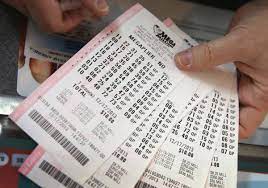Introduction:
Lotteries have been captivating the imagination of people for centuries, offering the promise of life-changing fortunes to those fortunate enough to hold the winning ticket. The concept of a lottery has evolved over time, from ancient togel deposit pulsa drawing lots to modern, multimillion-dollar jackpot games. In this article, we’ll delve into the fascinating world of lotteries, examining their history, mechanics, and the allure that makes them a global phenomenon.
A Historical Perspective:
The roots of lotteries can be traced back to ancient times, with evidence suggesting that the Chinese used a form of lottery to fund major public projects like the Great Wall. The concept spread to other civilizations, including the Roman Empire, where lotteries were employed to distribute property and slaves.
Lotteries also played a crucial role in financing public initiatives during the Renaissance. In the 16th century, Queen Elizabeth I authorized the first English state lottery, which helped fund the repair of harbors and other infrastructure projects. Lotteries continued to evolve, becoming a popular means of fundraising for both public and private ventures.
Modern Lotteries:
The modern lottery as we know it emerged in the 20th century, with numerous countries around the world adopting this form of gambling to generate revenue for public projects, charities, and other initiatives. Lotteries vary widely in terms of structure, prize amounts, and participation rules, but they share the common thread of offering participants the chance to win substantial sums of money through a game of chance.
Mechanics of Lotteries:
- Ticket Sales:
Lotteries typically involve the sale of tickets to the public. Participants purchase these tickets, often featuring a combination of numbers or symbols, with the hope that their ticket will match the winning combination drawn later. - Drawing Process:
The drawing process is a highly anticipated event, usually conducted through a random and transparent method. Modern lotteries often use mechanical machines with numbered balls or computerized systems to ensure the randomness of the draw. - Prize Tiers:
Lotteries commonly feature multiple prize tiers, with varying amounts awarded for matching different numbers or combinations. The grand jackpot is awarded to those who match all the specified numbers, while smaller prizes are given for partial matches. - Frequency and Jackpot Accumulation:
Some lotteries draw winners more frequently, offering smaller, more regular prizes. Others, like major international lotteries, accumulate jackpots over multiple draws, creating the potential for enormous payouts that capture the public’s attention.
The Allure of Lotteries:
- Dreams of Fortune:
Lotteries tap into the universal human desire for financial security and prosperity. The chance to win a life-changing sum of money fuels dreams of escaping financial struggles and achieving newfound freedom. - Accessibility:
Lotteries are widely accessible, allowing people from all walks of life to participate. The low cost of a ticket makes it an affordable form of entertainment, attracting a diverse range of participants. - Community Impact:
Many lotteries allocate a portion of their proceeds to charitable causes, community projects, or public infrastructure. Participants often feel a sense of contributing to a greater good, even if they don’t win.
Challenges and Criticisms:
Despite their popularity, lotteries face criticism for their association with gambling addiction and the regressive nature of their economic impact, as participants with lower incomes may disproportionately spend a significant portion of their earnings on tickets.
Conclusion:
Lotteries have embedded themselves deeply into the fabric of societies worldwide, offering a unique blend of entertainment, chance, and the prospect of a transformed life. As long as the allure of luck persists, lotteries will continue to capture the imaginations of millions, serving as a testament to the enduring fascination with the prospect of winning big against all odds.

